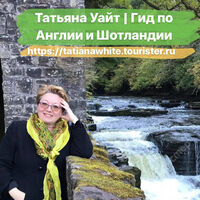Unique Scottish jewellery made from highland heather stems |
Шотландские украшения из вереска в Питлохри (70 милей от Эдинбурга, 1 час 30 мин. на машине)
Весь процесс - по видео.
Описание процесса изготовления вересковых украшений отлично описано с фотографиями по ссылке: http://fishki.net/1425413-ukrashenija-iz-vereska.html
In English:
"Out on the Scottish highlands, a tried and tested process is beginning once again.
Cutting back the seemingly endless fields of purple heather, these men aren't trying to rid the land of this abundant shrub, but collect its stems.
Having gathered enough to make their trip worthwhile, they're heading back to their factory to turn the plant's wooden stems into unique Scottish jewellery.
Here in Pitlochry (70 miles north of Edinburgh), they've been making jewellery from wild heather stems for decades.
The finished product is placed into everything from pendants, bangles and brooches, to earrings, pens and rings.
And according to Stuart Brown, the Design Manager at Heather Gems, they and every piece they create is one of a kind.
"We're the only people in the world that manufacture it," he says.
"Well basically that is the first and foremost, we're the only the people that do it. Every single piece is different due to the process, the dye penetrates the stems different amounts so one red slice is different to the next."
Having dried then cut the heather stems down to the correct size, they're placed into this metal shot-blaster which strips all the bark from them.
Then - once they're dyed varying colours, including red, blue, green, purple and yellow - the branches are mixed by hand.
According to Brown, they look for a specifically long type of heather stem, which means it must be of a certain age.
"The main type of heather which we look for is it's got to be a reasonable length - sort of maybe 40 to 50 centimetres in length - so that then we can get a decent amount from what we're picking," he says.
"Effectively then it needs to have been growing there for maybe 20 to 30 years to allow it to get to the length that we're looking for."
Once the coloured heather stems have been mixed, they're dipped into glue and compressed into a colourful tight block to create that mix of colours.
Around 4 bundles at a time are placed into this press then compressed by about 50 tonnes of weight.
That's then placed into an oven to set the glue.
Brown says the process was originally conceived during the Second World War when there was a shortage of wood and workmen found they could just as easily use heather.
It was later changed to make jewellery instead.
Since the 1950s, heather jewellery has been produced from the wild heather of the Scottish highlands.
Over the years it has developed from simple pieces into more complex items and fittings.
"So, there's a shortage of wood during the Second World War," says Brown.
"So they decided to try using heather stems instead, because effectively it is sort of a wood. They then compressed the heather stems into wooden floor tiles and they started using it as a flooring. It was then too expensive the whole process so it was then turned from floor tiles into smaller pieces of jewellery."
Once the block of compressed heather stems has been heated in the oven, it's then trimmed with this vertical band saw, then cut into manageable blocks.
Later, this machine automatically cuts a range of individual pieces from the blocks including hearts, circles, squares and butterflies.
Brown says the fact that heather is a wild plant in the Scottish highlands makes their gems a particularly Scottish product.
"Well, heather is known as a wild Scottish plant," he says.
They also use silver plated and pewter metal."
You can license this story through AP Archive: http://www.aparchive.com/metadata/youtube/f0d713f6b9a222956a6bc83d9abfec5e
Find out more about AP Archive: http://www.aparchive.com/HowWeWork
